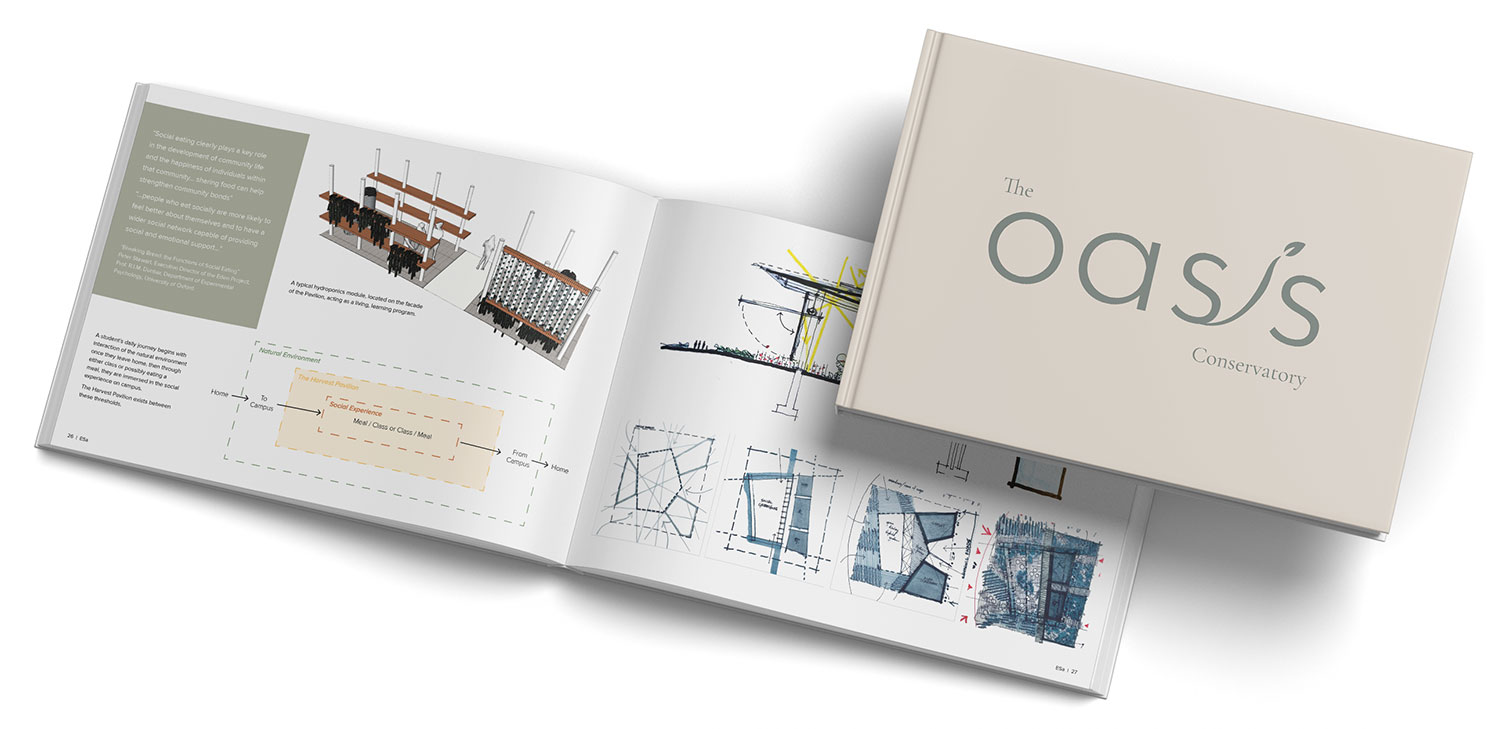Design Study: The Oasis Conservatory
How can architecture positively impact our mental health? A design study intended to examine how architecture and the built environment can affect our mood.
As our team began this study, we envisioned a single “wellness center” with a variety of amenities and services within a large facility. Talking through the challenges, we began to realize a one stop shop had limitations. First and foremost, it would need to be a destination facility. Students would have to plan to be there. This goes against the very nature of the problem of being overstressed. We soon realized the advantages of multiple, smaller pavilions spread across campus.
- Single destinations could be organically placed around campus.
- If you needed a refresher, one of the pavilions would be close by. You could stop in on your way back to your room or headed to class.
- The smaller footprints allow development between buildings rather than a strategic master plan.
- Implementation can be piecemeal and phased across several years.
- Funding is easier to secure, and each would provide a naming opportunity.
As a result, we created the following pavilions – the harvest pavilion, the exercise pavilions, the arts + music pavilion, the counsel pavilion, the respite pavilion, and the social intersections pavilion. In the pursuit to create architecture that promotes student wellness, there are many different strategies we can take. For this study, there was a desire to create pavilions that can touch many aspects of wellness.
The reimagined “Wellness Wheel,” developed by Clarion University, establishes seven domains for wellness: physical, social, environmental, financial, spiritual, emotional, and intellectual. Each of the pavilions address one or more of the seven domains for wellness for architecture to encourage coping in a healthy way.
